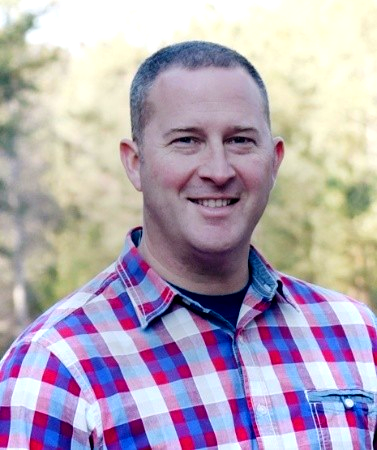Student Profile: Kevin Pannell, PMP
 I am a married father of three human boys and a male Border Collie named "Hoss". About one year ago I transitioned from the emergency management and public safety fields to the private sector and now work as an IT Project Manager at an academic medical center in Richmond, Virginia. I’ve been practicing my core skills of helping teams develop S.M.A.R.T. objectives, creating multi-disciplinary teams and organizations, coordinating and sharing resources and connecting each of these efforts with effective communications for over a decade.
I am a married father of three human boys and a male Border Collie named "Hoss". About one year ago I transitioned from the emergency management and public safety fields to the private sector and now work as an IT Project Manager at an academic medical center in Richmond, Virginia. I’ve been practicing my core skills of helping teams develop S.M.A.R.T. objectives, creating multi-disciplinary teams and organizations, coordinating and sharing resources and connecting each of these efforts with effective communications for over a decade.
My realization that these “foundational four” key skills lead to improved emergency response or project success come from a combination of my background in military medicine as a U.S. Navy Hospital Corpsman, as a Volunteer Firefighter and sworn Emergency Medical Technician, Public Health Emergency Coordinator and all-hazards incident management team Planning Section Chief. Now I share my experience and that of others via the Between the Slides podcast I created and host.
Before touching the A Guide to the Project Management Body of Knowledge (PMBOK® Guide) I strongly suggest the applicant be very familiar with the PMP® application and testing processes. For me attempting to read the PMBOK® Guide cover-to-cover was overwhelming as I do not feel it was written to be read straight through. I do recommend reading Part 2 of the PMBOK® Guide as it is a very helpful summary and the information flows much more effectively than Part 1. I would reference Part 1 of the PMBOK® Guide as needed to shore up information gaps not covered by the applicant’s PMP preparation course or other training completed to achieve the education hours. I found learning and being able to write out the Project Management Process Group and Knowledge Area Mapping table to be among the most helpful advice I received (Thanks honey!). From this mapping, you can mentally trace the order of actions when faced with situational questions on the exam.
During my last week of preparation, I completed two full exams and reviewed information gleaned from an online course that summarized key points of the PMBOK® Guide. On the first, I re-benchmarked myself, then used PMP Exam Simulator to quiz on specific weak points. After that, I completed three, ten question custom quizzes on each of the knowledge areas until I passed with at least eighty percent. After that, I completed another practice exam and saw a dramatic difference.
My summary path to PMP success:
- Did my homework on the Project Management Institute (PMI)® application and testing process
- Completed online PMP exam preparation course
- Referenced Part 1 of PMBOK® Guide and read much of Part 2 of PMBOK® Guide
- Completed online course that summarized key points of the PMBOK® Guide
- Purchased and used a PMP exam prep iPhone app
- Many, many, many PMP Exam Simulator practice quizzes and 2 or 3 full exams
Kevin Pannell, PMP, NREMT
Host of Between the Slides podcast | www.betweentheslides.com LinkedIn: https://www.linkedin.com/in/psctopmp